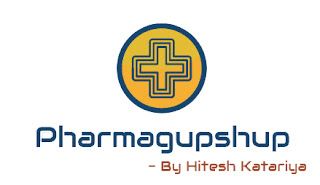
BioNanotechnology by Elizabeth Papazoglou
Morgan and Claypool Publishers ISBN 1598291386 2007-08-21 PDF 139 Pages 4.6 MB
Morgan and Claypool Publishers ISBN 1598291386 2007-08-21 PDF 139 Pages 4.6 MB
This book aims to provide vital information about the growing field of bionanotechnology for undergraduate and graduate students, as well as working professionals in various fields. The fundamentals of nanotechnology are covered along with several specific bionanotechnology applications, including nanobioimaging and drug delivery which is a growing $100 billions industry. The uniqueness of the field has been brought out with unparalleled lucidity; a balance between important insight into the synthetic methods of preparing stable nano-structures and medical applications driven focus educates and informs the reader on the impact of this emerging field. Critical examination of potential threats followed by a current global outlook completes the discussion. In short, the book takes you through a journey from fundamentals to frontiers of bionanotechnology so that you can understand and make informed decisions on the impact of bionano on your career and business.
CONTENTS
Introduction
0.1 Bionanotechnology: A Historical Perspective
0.2 Nanotechnology and Bionanotechnology
0.3 Notable Nanoimages in Bionanotechnology
0.3.1 AFM-Qd
0.3.2 Nano-drug Delivery Chip
0.3.3 Atomic Force Microscopy Image (AFM) of SWNT
0.3.4 Scanning Electron Microscopy Image (SEM) of SWNT
0.4 Opportunities and Challenges of Bionanotechnology
0.5 Growth potential of Nanotechnology and Related Expenditures
References
1. The Significance of Nano Domain
1.1 Limitations of Micron Size
1.2 Need for Nano-Size—Surface Volume Ratio Significance
1.3 Significance and Key Features of Nano-Size
1.4 Derivation of Bohr’s Atomic Radius of a Hydrogen Atom
1.5 Comparison of Particle Behavior at Nano-Size to Macro Size: Gold and Titania
1.6 Advantages of Scaling Down—Nano-Size
References
2. Nano Drug Delivery
2.1 Conventional Drug Delivery
2.1.1 First Pass Effect
2.1.2 Routes of Delivery
2.2 Targeted Drug Delivery
2.3 Chemistry of Drug Delivery Vehicles
2.3.1 Nanocapsules
2.3.2 Unilamellar Liposomal Vesicles
2.3.3 Nanoparticles
2.3.4 Microemulsions
2.4 Delivery Profiles
2.4.1 Rate-Preprogrammed Drug Delivery Systems
2.4.2 Activation-Modulated Drug Delivery Systems
2.4.3 Feedback-Regulated Drug Delivery Systems
2.4.4 Site-Targeting Drug Delivery Systems
2.5 The Role of Nanotechnology in Drug Delivery
2.5.1 Transdermal
2.5.2 Blood Brain Barrier
2.6 Advantages of Targeted Drug Delivery Systems
References
3. BioNanoimaging
3.1 Quantum Dots
3.2 Ultrasound Contrast Agents
3.3 Magnetic Nanoparticles
References
4. Successful Applications of Bionanotechnology
4.1 Nanostructures and Nanosystems
4.1.1 Nanopore Technology
4.1.2 Nano Self-Assembling Systems
4.1.3 Cantilevers
4.1.4 Nanoarrays
4.2 Nanoparticles
4.2.1 Quantum Dots (QDs)
4.2.2 Paramagnetic Iron Oxide Crystals
4.2.3 Dendrimers
4.2.4 Carbon Nanotubes
4.2.5 Nanosomes and Polymersomes
4.3 In Vitro Diagnostics
4.4 Medical Application of Nanosystems and Nanoparticles
4.4.1 Drug Delivery Applications
4.4.2 Nanoparticles in Molecular Imaging
4.5 Summary and Conclusions
References
5. Synthesis of Gold, Titania, and Zinc Oxide
5.1 Synthesis of Gold
5.1.1 Background
5.1.2 Brust Method of Synthesis of Thiol Derivatized Gold NPs by Biphasic Reduction
5.1.3 Gold Colloids
5.1.4 Gold Nanofilm
5.1.5 Gold Nanorods
5.2 Synthesis of Titania Nanostructures
5.2.1 Background
5.2.2 Solvo-Thermal Synthesis of Titania Nano Crystals
5.2.3 Sol-Gel Template Synthesis of Titania Nano Tubes and Rods
5.2.4 Overview of Other Synthesis Methods
5.3 Synthesis of Zinc Oxide
5.3.1 Background
5.3.2 The Solid-Vapor Synthesis of ZnO
5.1
5.1.1 Brust Method of Synthesis of Thiol Derivatized Gold NPs by Biphasic Reduction
5.2
5.2.1 Solvo-Thermal Synthesis of Titania Nano Crystals
5.2.2 Sol-Gel Template Synthesis of Titania Nano Tubes and Rods
5.2.3 Overview of Other Synthesis Methods
5.3
5.3.1 The Solid-Vapor Synthesis of ZnO: Horizontal Tube Furnace
5.3.2 Wurtzite Structure of ZnO
References
6. Is Bionanotechnology a Panacea?
6.1 Background
6.2 Primary Concerns
6.3 Assessing Potential Risks
6.3.1 Inhalation
6.3.2 Contact/Dermal Delivery
6.3.3 Other Routes of Contact
6.3.4 Environmental Impacts of NPs and the Food Chain
6.3.5 Explosion Hazards
6.4 Lessons from the Past
6.5 Conclusion
References
7. Roadmap to Realization of Bionanotechnology
7.1 Introduction
7.2 Nano Vision: the Futuristic Goals of Bionanotech
7.3 Working toward Realization: Current Progress
7.4 Screenshot of Reality: Bionano-Unbiased/Uncensored
7.5 The Nano Mission: Roadmap to Realization of Translation Research
7.5.1 Bionano in the US
7.5.2 Bio-Nano in Japan
7.5.3 Bio-Nano in UK
7.5.4 UK–Japan Joint Initiative for Bionanotechnology
7.5.5 The EU Initiative in Bionanotech
7.5.6 Bionano in Asia
http://rapidshare.com/files/54677672/BioNanotechnolog.pdf.html



0 comments:
Post a Comment